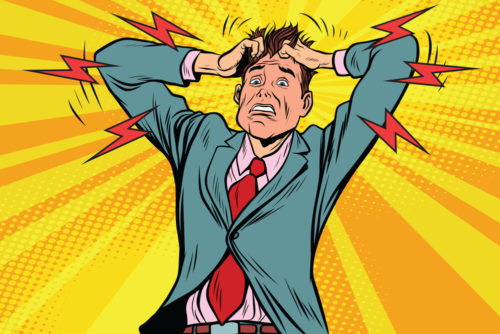“You’ve been Amazon’d.”’
For retailers, the three most cringe inducing words in the English language. First they came for books, then for toys, then for clothes, furniture and even food…..now Bezos is coming for……the pharmacies?
Apparently. For at least two years the signs and portents have been pointing towards Amazon having interest in this realm. Amazon has become much more aggressive in its push into medical supplies, hired key lobbyists with healthcare backgrounds, and placed suspicious help wanted ads seeking to hire seasoned healthcare execs. All of these creeping indicators were already enough to trigger nauseating share drops for CVS and Walgreens, and the media circus around this possibility caused pharmacies like CVS to make some big moves to shore up their competitive defenses. All of this was in response to the “maybe” or “could be” that Amazon was about to storm the industry. But this week we have the first obvious indication that Amazon is coming for CVS’s lunch: the purchase of Pillpack.com. Bezos and company are plunking down $1 billion in cold, hard cash to buy the start up online pharmacy, instantly acquiring pharmacy licenses in 49 states. Theoretically, Amazon could slap the Prime brand on those pill boxes and start shipping just as soon as the deal closes, which should be towards the end of 2018.
The market was apoplectic. Shares of CVS, Walgreens and Rite Aid dropped double digits in one day. Even pharmaceutical distributors got hammered within moments of the announcement. This latest lightning bolt comes on top of the hurricane that the pharmacy stocks have already been trying to navigate ever since the Amazon fears began to emerge. Both CVS and Walgreens have plummeted by 30% to 40%% in the last two years. Even though both Walgreens and CVS have already made radical moves to counter the Amazon threat, Mr. Market remains skeptical.
Ultimately, the pharmacy business is still one primed for spectacular growth as Medicare recipients live, and live and live. However, Amazon’s probable entry into the field is a paradigm shift. In some ways it could be considered part of the miraculous circle of life of American capitalism. 2015 marked the nadir of competition in the pharmacy space, and in 2018, a new competitor has been attracted to challenge an oligopoly ripe for change. This is how economics text books tell us that capitalism should work. Let’s go for a walk down memory lane……
If there is one thing that I have emphasized on this blog, it’s that corporate behemoths are only as innovative as they have to be. They will typically take the shortest, easiest route to growing quarterly profits because that is how most corporate executives are rewarded. In the early 1990’s, the pharmacy landscape was Easy Street for executives with a strong mastery of corporate finance and capital deployment.
What I mean by that was, any MBA could look at the numbers involved in the pharmacy industry and employ 9th grade math to generate obscene profits. Consider the facts on the ground circa 1994:
-The Baby Boom generation, getting into early middle age at that time, would eventually become today’s 10,000 per day Medicare Tsunami. Even though the Baby Boomers were famous for coining the phrase “Don’t trust anyone over 30” and made popular song lyrics like “Hope I die before I get old,” the accountants and bean counters of Corporate America knew better. Sooner or later, that massive demographic wave would need medicine; lots of medicine.
-As time went by, our society began to generate more and more medicines. This was great news, because it meant that previously unaddressable conditions, such as erectile disfunction, or even AIDS, suddenly became mere health annoyances correctable by pills. That meant a huge green arrow pointing up for future pharmaceutical sales.
-On the other side of the ledger, we had thousands of small Mom and Pop pharmacies dotting the American landscape. Think back to old movies; what was more American than the local pharmacy, where you could pick up a script and grab a cherry coke? Even a lot of former Mom and Pop’s had grown into local chains, with 10, 50, or even 100 pharmacies concentrated around a certain geographical location. Near us in South Florida, we had Rexall drug. Rexall drug was founded by….well, old man Rexall. Over time the Rexall family had been shrewd and prosperous growing to become a dominant local chain. But things were changing in the 90’s. In the 90’s, we had a lot less cherry cokes with Old Man Rexall, and a lot more Walmart Supercenters choking the life out of small businesses everywhere.
So all the pieces were already on the board. Someone just had to play the game. For some reason or another, CVS and Walgreens wound up with the most aggressive, most capital savvy management, and these management teams went on an epic buying spree, hoovering up smaller local chains like a fat kid in a candy store. Through the dark arts of Corporate America, competition was absorbed or driven to bankruptcy, making sure that only a few massive players would survive to split the coming loot from those rapidly aging Baby Boomers.
Any economic textbook would tell you that a market with growing demand and shrinking supply should results in growing profits for sellers. Mega investors Warren Buffett and Benjamin Graham would tell you the same. Did these theories prove out?
From 1996 to 2016, during CVS’s epic quest to consolidate the American pharmacy industry, the share price skyrocketed from $4.90 to $94.20, for a staggering 1,800% return. Walgreens wasn’t far behind; they would have transformed a $10,000 investment into $134,000 over twenty years.
What a party!!!! Over twenty years, America was transformed from a nation of thousands of small local pharmacists to a virtual triopoly composed of CVS, Walgreens, and Walmart. As long as the corporate steamroller kept buying, share prices just kept going up.
But as the late, great, Prince once sang, “Life is just a party, and parties aren’t meant to last.”
Over the last few years, CVS and Walgreens have finally become victims of their own success. They got so good at consolidating competitors, that they began to run out of smaller players to buy. The “high water mark” of the trend could be Walgreens’ partially stymied takeover of struggling Rite Aid. In 2015, Walgreens management offered $17 billion dollars to buy all 4,532 Rite Aid stores nationally, which would have capped the consolidation journey of the American Pharmacy Industry, leaving just CVS, Walgreens and Walmart to dominate the retail side of the business. However, what seemed like a straightforward deal to Walgreens’ management seemed like just a little too much elimination of competition to the Federal Trade Commision, and the deal became a two year ordeal of feverish lobbying, negotiation, and finally concession. In the end, Uncle Sam allowed Walgreens to take over 1,932 Rite Aid stores, leaving a smaller Rite Aide to compete in some markets deemed insufficiently competitive by the Federal Trade Commission. As of the writing of this post Walgreens, CVS, Walmart and a reduced Rite Aide control up to 90% of the retail pharmacy markets in major American population centers (1).
If you or I were named “Mr. Walgreen” we would probably be fairly happy to sit back, enjoy our dominant, stable, market share on the American landscape, and just count the profits that roll in like clockwork, quarter after quarter, year after year. But that is not how jumbo sized public corporations work. Executives only receive a tiny fraction of a percent of the actual cash flow that the business generates. Mostly, they are paid in stock, so that their manner of profiting from their involvement in the corporation is actually quite similar to other common shareholders, such as Mom&Pop investors. Simply put, for CVS executives and Walgreens executives to make real money, the stock has to go up. Stable revenues and solid profits just won’t do it; Wall Street demands growth. Quarter after quarter, year after year, profits must grow and grow, or someone gets fired. Given that the consolidation game is now essentially over, what is an exec to do?
This question, which was a theoretical musing that CVS execs may have pondered in 2015, has suddenly become all too real as Amazon has emerged as a powerful interloper in a space that had been denuded of meaningful competition.
True to form, both CVS and Walgreens have decided that the answer is to buy something. Walgreens focused on buying whatever portion of Rite Aid the Federal Government would allow. Poor CVS had no more pharmacies left to buy. So CEO Larry Merlo settled on a particularly bold strategy; buy the patients. Big Larry counted up almost every last penny that CVS could muster, and slapped down $69 Billion for Aetna, one of America’s largest insurers. Now CVS would go from simply providing medicines, to becoming a “one stop shop” for healthcare, from your first doctor’s visit to the last medicines you take before they put you in the ground. Typical of a corporate, anti-competitive mindset, this means that Aetna and its 22.2 million members would now be guaranteed CVS patients. Top that Bezos!
It has yet to be seen if Bezos can ace Merlo’s daring move, but something had better work, soon. Mr. Market has hated the deal, and CVS’s stock has continued the downward spiral that began in 2016. As the S&P 500 have soared, CVS has shriveled from $110 per share to just $65 per share. A substantial stretch of this decline came after Merlo announced his big deal.
Ouch.
As a CVS shareholder, I hate to see investment flounder, especially as the total addressable market only grows for CVS’s products and services. However, as a citizen, I have to be glad that Mr. Bezos has noticed a lackadaisical oligopoly and decided to apply the famous Amazon screws. I agree with the Editorial Board of the Wall Street Journal:
Amazon has remade retail by adopting Apple founder Steve Jobs’s dictum of showing consumers what they want before they know they want it—and then getting it to them fast. CEO Jeff Bezos is now betting he can use this strategy to disrupt the pharmacy business, which could use the competition……Amazon’s entry into drug delivery is welcome disruption that could benefit consumers.
Is it time to sell my CVS investment? Probably not. Let’s remember that today’s 65 year old female baby boomer has a 25% chance of living until age 96. That translates to a lot of pills, potions, and shots which will most likely be paid for by the Federal government. Bezos is attracted to the pharmacy market because of the rock solid demographic trends that will power this business. In some ways, Amazon’s market entry is a good sign! It may be rough sailing for CVS in the near future as it grapples with the new reality of viable challengers to its comfortable oligopoly. However, ultimately the demographics should win out. As the saying goes “numbers don’t lie.”







But what will happen when Amazon actually joins the fray? “The game is afoot…”